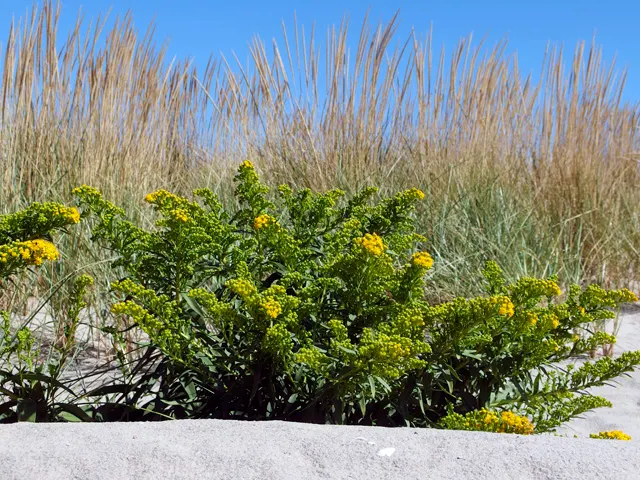Sandy Beaches
Virginia Creeper, Parthenocissus quinquefolia, growing across the dune.
Solidago sempervirens, the hardiest of Goldenrod, tolerating salt and wind, drought and flood, poor soil and nearly zero nutrients.
It is hardly considered a garden plant, but its structure, succulent leaves, yellow autumn flowers, and downy late autumn seeds are perfect for the garden.
And insects love it.
In fact, ecologists recognize Seaside Goldenrod for attracting native bees and predatory insects.
The dunes, prior to Sandy, were easily 8 feet above the concrete walkway.
These are now beginning to rebuild with the help of snow fencing and simply keeping off.
Cakile edentula, (American) Sea Rocket.
Kali turgida, I think, creating its own dune.
When we leave Brooklyn for another place, one likely known for draining water, not containing it, I know I will miss the beach and tidal marshes, even the scent of muck, the most. Appreciate, respect, and protect it.














It looks remarkably good considering it's only been two years. Our southern beaches (Va and the Carolinas) haven't been hit that hard in many years, but one can see the ebb and flow of the dunes over the year. In this area they are in great shape. Yours will be, too, in another four or five years. Mother Nature willing ....
ReplyDeleteIf the storms keep at bay...
Delete